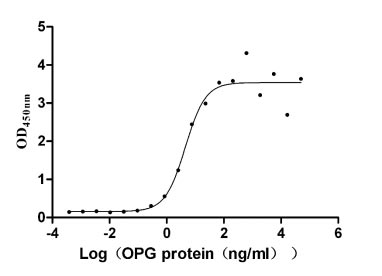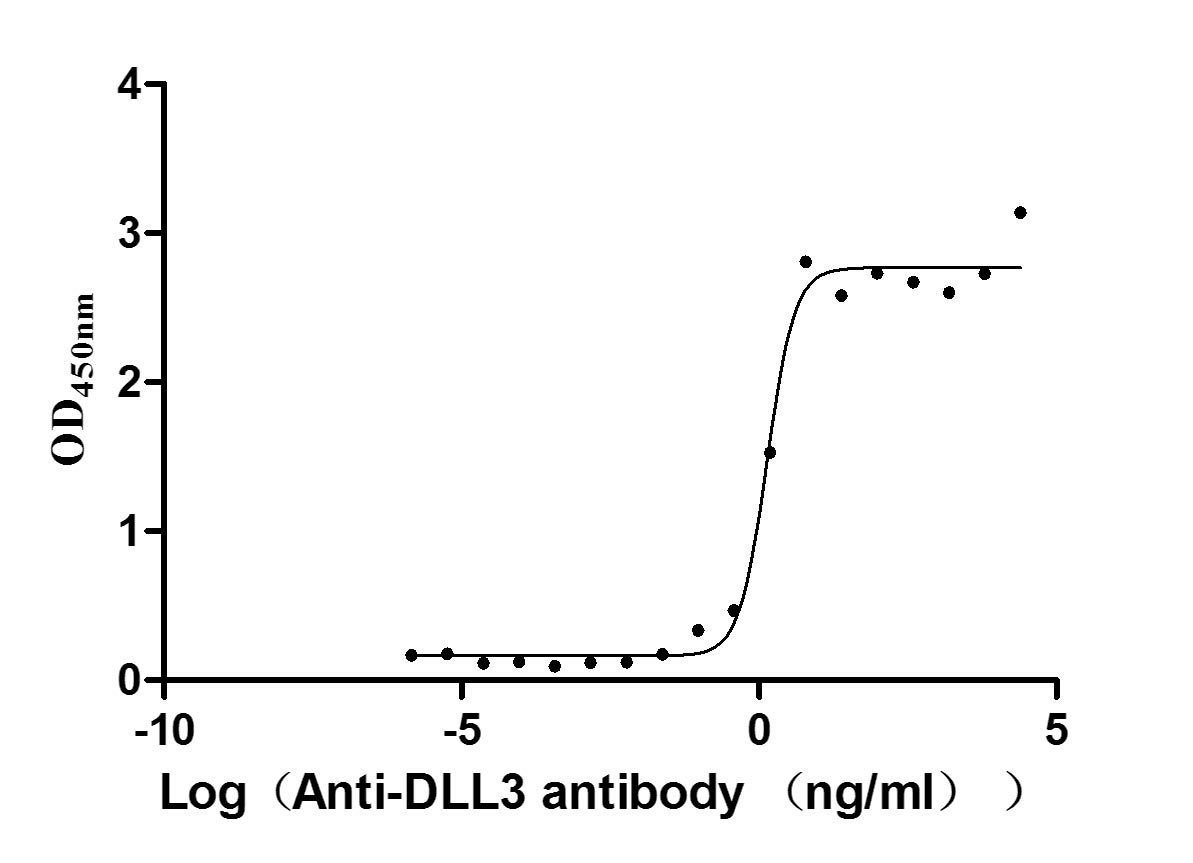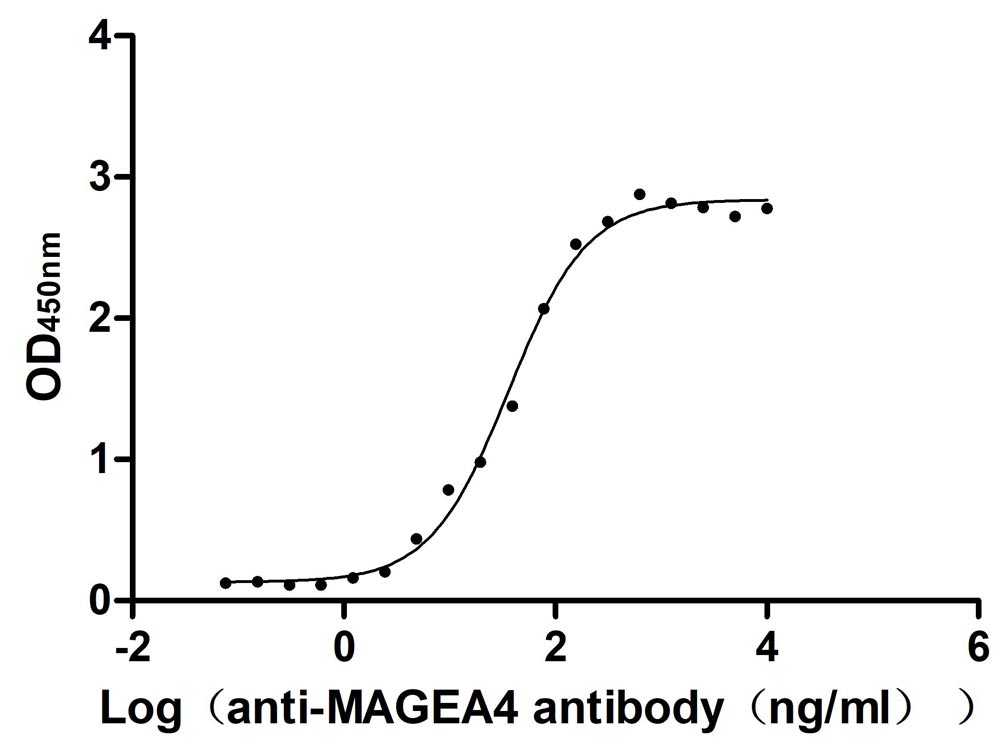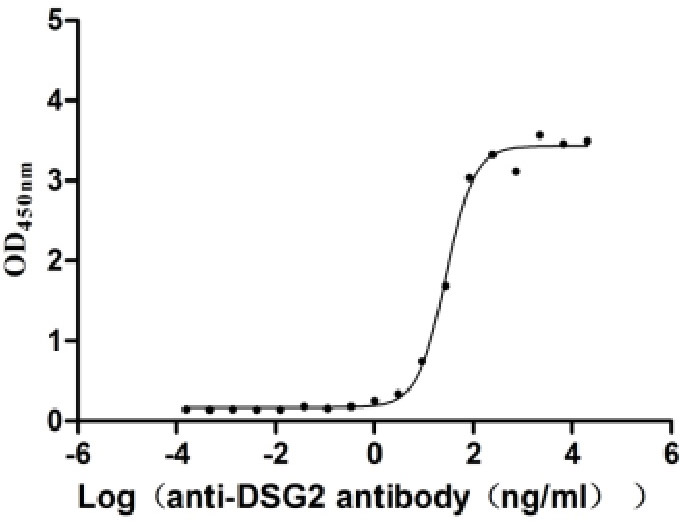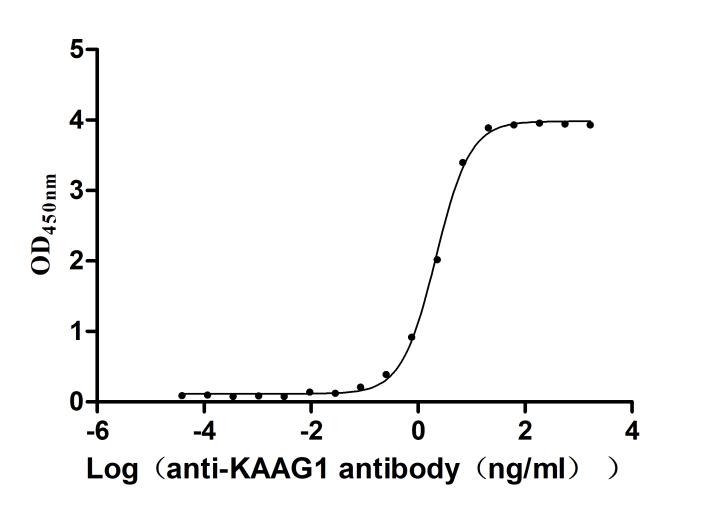Recombinant Arabidopsis thaliana Protein ROS1 (ROS1), partial
-
中文名称:拟南芥ROS1重组蛋白
-
货号:CSB-YP874445DOA
-
规格:
-
来源:Yeast
-
其他:
-
中文名称:拟南芥ROS1重组蛋白
-
货号:CSB-EP874445DOA-B
-
规格:
-
来源:E.coli
-
共轭:Avi-tag Biotinylated
E. coli biotin ligase (BirA) is highly specific in covalently attaching biotin to the 15 amino acid AviTag peptide. This recombinant protein was biotinylated in vivo by AviTag-BirA technology, which method is BriA catalyzes amide linkage between the biotin and the specific lysine of the AviTag.
-
其他:
-
中文名称:拟南芥ROS1重组蛋白
-
货号:CSB-BP874445DOA
-
规格:
-
来源:Baculovirus
-
其他:
-
中文名称:拟南芥ROS1重组蛋白
-
货号:CSB-MP874445DOA
-
规格:
-
来源:Mammalian cell
-
其他:
产品详情
-
纯度:>85% (SDS-PAGE)
-
基因名:
-
Uniprot No.:
-
别名:ROS1; DML1; At2g36490; F1O11.12; DNA glycosylase/AP lyase ROS1; EC 4.2.99.18; DEMETER-like protein 1; Protein REPRESSOR OF SILENCING 1; Protein ROS1
-
种属:Arabidopsis thaliana (Mouse-ear cress)
-
蛋白长度:Partial
-
蛋白标签:Tag type will be determined during the manufacturing process.
The tag type will be determined during production process. If you have specified tag type, please tell us and we will develop the specified tag preferentially. -
产品提供形式:Lyophilized powder
Note: We will preferentially ship the format that we have in stock, however, if you have any special requirement for the format, please remark your requirement when placing the order, we will prepare according to your demand. -
复溶:We recommend that this vial be briefly centrifuged prior to opening to bring the contents to the bottom. Please reconstitute protein in deionized sterile water to a concentration of 0.1-1.0 mg/mL.We recommend to add 5-50% of glycerol (final concentration) and aliquot for long-term storage at -20℃/-80℃. Our default final concentration of glycerol is 50%. Customers could use it as reference.
-
储存条件:Store at -20°C/-80°C upon receipt, aliquoting is necessary for mutiple use. Avoid repeated freeze-thaw cycles.
-
保质期:The shelf life is related to many factors, storage state, buffer ingredients, storage temperature and the stability of the protein itself.
Generally, the shelf life of liquid form is 6 months at -20°C/-80°C. The shelf life of lyophilized form is 12 months at -20°C/-80°C. -
货期:Delivery time may differ from different purchasing way or location, please kindly consult your local distributors for specific delivery time.Note: All of our proteins are default shipped with normal blue ice packs, if you request to ship with dry ice, please communicate with us in advance and extra fees will be charged.
-
注意事项:Repeated freezing and thawing is not recommended. Store working aliquots at 4°C for up to one week.
-
Datasheet :Please contact us to get it.
相关产品
靶点详情
-
功能:Bifunctional DNA glycosylase/lyase, which excises 5-methylcytosine (5-meC) and 5-hydroxymethylcytosine (5-hmeC), leaving an apyrimidinic (AP) site that is subsequently incised by the lyase activity. Generates 3'-phosphor-alpha,beta-unsaturated aldehyde (3'-PUA) as a primary 5-meC excision intermediate. Prevents DNA hypermethylation, specifically in the promoter of otherwise silenced loci. May be involved in DNA repair through its nicking activity on methylated DNA. Binds with similar affinity to both methylated and non-methylated DNA. Highly distributive behavior on DNA substrates containing multiple 5-meC residues. Involved with Pol IV in the remodeling of the 5S rDNA chromatin via DNA methylation modifications during the first days of development post-germination. Participates in UV-B induced- and oxidative DNA damage repair.
-
基因功能参考文献:
- ound that DOGL4 negatively affects seed dormancy and response to the phytohormone abscisic acid and that ROS1 controls these processes by regulating DOGL4 PMID: 30266793
- Results provide evidence that ROS1 expression is regulated by MET18 which is required for its activity. ROS1 binds to the iron-sulfur cluster of MET18. PMID: 27193999
- ROS1 preferentially targets transposable elements (TEs) and intergenic regions. Compared with most TEs, ROS1-targeted TEs are closer to protein coding genes, suggesting that ROS1 may prevent DNA methylation spreading from TEs to nearby genes. PMID: 27797352
- Transgenic tobacco overexpressing AtROS1 showed tolerance to salt stress that could have been due to the higher expression levels of the genes encoding enzymes of the flavonoid biosynthetic and antioxidant pathways. PMID: 26116024
- Our results suggest that ROS1-mediated active DNA demethylation requires MET18-dependent transfer of the iron-sulfur cluster, highlighting an important role of the CIA pathway in epigenetic regulation. PMID: 26492035
- We propose that the ROS1 locus functions as an epigenetic rheostat, tuning the level of demethylase activity in response to methylation alterations, thus ensuring epigenomic stability. PMID: 25826366
- ROS1, DML2, and DML3 play a role in fungal disease resistance in Arabidopsis PMID: 25228471
- ROS1 mediated DNA demethylation combats the activity of RNA-directed DNA methylation to influence the initiation of stomatal lineage cells. PMID: 24898766
- Data indicate that H3K9 dimethylation level in mutants ros1 fpgs1 (folylpolyglutamate synthase 1) was clearly reduced. PMID: 23881414
- the Arabidopsis RdDM pathway has an antisilencing function due to its role in maintaining ROS1 expression PMID: 22733760
- The polalpha/incurvata2 (icu2) gene was isolated as one ros1 suppressor because its mutation leads to the reactivation of the silenced 35S-NPTII gene. PMID: 19769574
- Data suggest that a function of REPRESSOR OF SILENCING 1 (ROS1) and DEMETER is to initiate erasure of 5-meC through a base excision repair process and provide strong biochemical evidence for the existence of an active DNA demethylation pathway in plants. PMID: 16624880
- These results demonstrate that ROS1 is a 5-methylcytosine DNA glycosylase/lyase important for active DNA demethylation in Arabidopsis. PMID: 16864782
- CpXpG and CpXpX sites become heavily methylated in the ros1 mutant. PMID: 17208187
- ROS1 removes methylation that has multiple, independent origins, including de novo methylation directed by RDR2-dependent and -independent RNAi pathways. PMID: 17951456
- Results suggest that ROS1 specificity arises by a combination of selective recognition at the active site and thermodynamic stability of the target base. PMID: 19443451
显示更多
收起更多
-
亚细胞定位:Nucleus. Nucleus, nucleolus.
-
蛋白家族:DNA glycosylase family, DEMETER subfamily
-
组织特异性:Expressed ubiquitously in both vegetative and reproductive organs.
-
数据库链接:
Most popular with customers
-
Recombinant Human Tumor necrosis factor receptor superfamily member 11B (TNFRSF11B) (Active)
Express system: Mammalian cell
Species: Homo sapiens (Human)
-
Recombinant Human Delta-like protein 3 (DLL3), partial (Active)
Express system: Mammalian cell
Species: Homo sapiens (Human)
-
Recombinant Human Melanoma-associated antigen 4 (MAGEA4) (Active)
Express system: Mammalian cell
Species: Homo sapiens (Human)
-
Recombinant Human Desmoglein-2 (DSG2), partial (Active)
Express system: Mammalian cell
Species: Homo sapiens (Human)
-
Recombinant Human Kidney-associated antigen 1(KAAG1) (Active)
Express system: E.coli
Species: Homo sapiens (Human)


